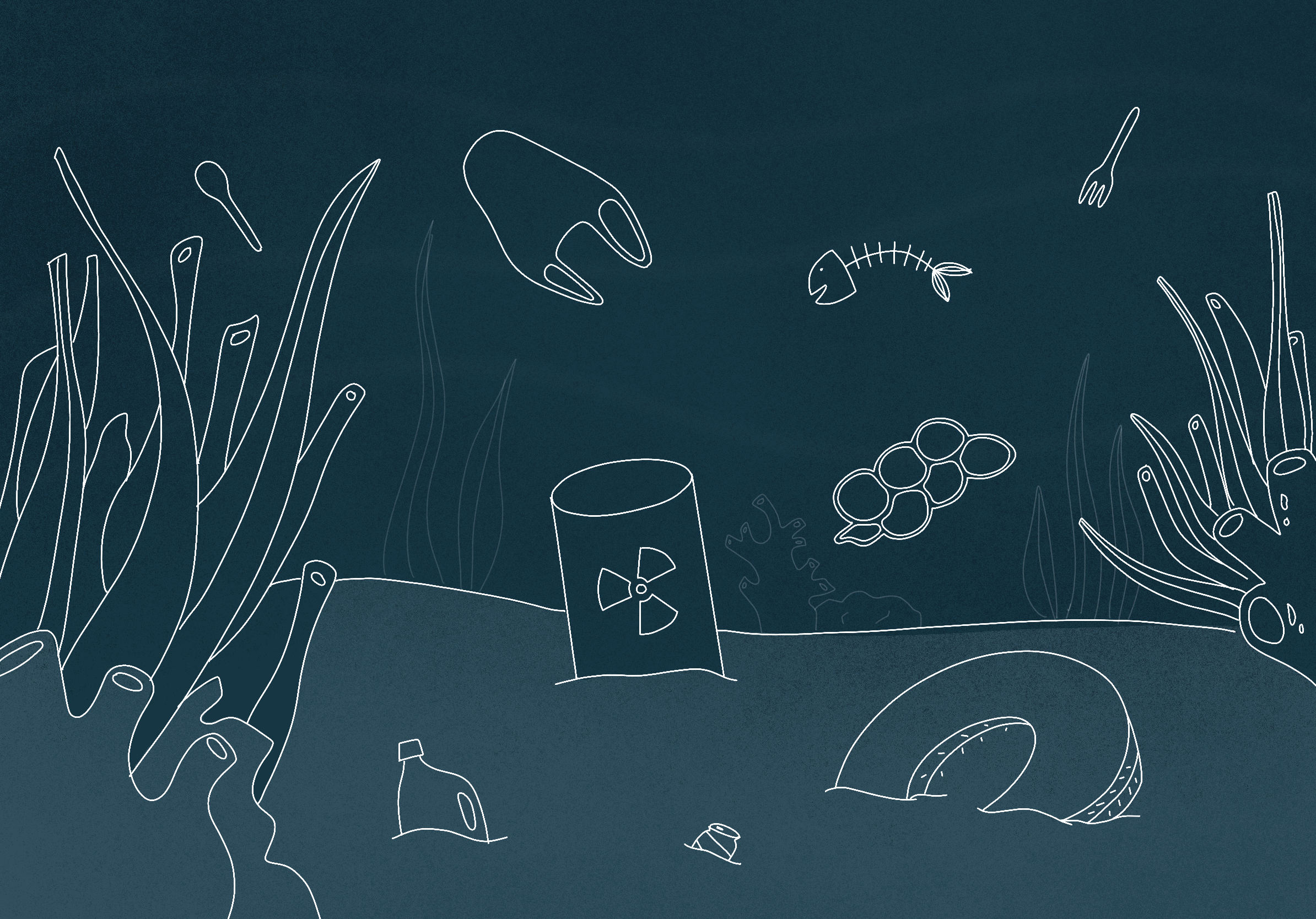The Great Pacific Garbage Patch, which consists entirely of plastic debris and waste, spans approximately 1.6 million square kilometres, that’s roughly twice the size of Texas.
Somewhere between Hawaii and California, in the temperate waters of the Pacific Ocean, lies an island that has scarcely been visited by humans. It is one of the few man-made locations on the globe that has yet to be colonized.
Contrary to other secluded must-visit islands in the Pacific ocean, the Great Pacific Garbage Patch is not a luxurious get-away spot.
Spanning approximately 1.6 million square kilometres, or twice the size of Texas, the Great Pacific Garbage patch is a build up of plastics and other debris. It is the largest of the five off-shore plastic accumulation zones in the world, according to The Ocean Cleanup, a Netherlands-based non-profit organization that is developing advanced technologies in an effort to rid the oceans of plastic.
While organizations such as The Ocean Cleanup are building technologies to help clean the waters, individuals are also adding to the cause like the French-American man Benoît Lecomte, who swam the length of the garbage patch to collect data and raise awareness.
In 2019, Lecomte set out to swim 300 nautical miles, or just under two kilometres, alongside a crew boat. The accompanying scientists collected data to track the movement of the plastics and marine life. He began his journey in Japan on June 5, with the intent to swim up to eight hours per day for three months.
Lecomte, who in 1998 swam across the Atlantic Ocean in just 73 days in support of cancer research, said he wanted to do something to bring attention to the increasing amount of plastic in our oceans, in an interview with Austin 360.
“We saw a lot of items we use on land, like plastic cups, straws, forks and spoons and oil containers,” Lecomte told Austin 360. “It was depressing because you see amazing sea life, then you see the plastic that we infect the oceans with, and it’s not supposed to be there.”
Accompanied by scientists from NASA and the University of Hawaii, Lecomte ended his journey on Nov. 11, 2019, though he did not complete it. Despite the thought of not finishing the expedition being among his greatest fears before setting out on his journey, he said that all he can do going forward is to turn people’s attention towards plastic pollution.
“I think that’s the problem — we don’t think it’s that big of a problem, but it’s all due to what we do on land,” Lecomte told Austin 360.
In fact, 1.15 to 2.41 million tonnes of plastic are entering the ocean each year from rivers, according to a study by Laurent Lebreton, an oceanographer and the head of research at The Ocean Cleanup.
According to Lebreton’s study, because of plastic’s “durability, low-recycling rates, poor waste management and maritime use, a significant portion of the plastics produced worldwide enters and persists in marine ecosystems.”
The density of these plastics is less than that of the water, allowing them to rise to the surface and be transported from smaller bodies of water, such as rivers and streams, to the ocean.
The Great Pacific Garbage Patch is bound by the North Pacific Subtropical Gyre, which is what draws the plastic and other waste together. A gyre is a large system of rotating ocean currents, as defined by the National Ocean Service. In other words, the Great Pacific Garbage Patch is part of a giant vortex of debris. The North Pacific Subtropical Gyre consists of four of these “vortices” rotating in a clockwise direction.
The centre of these four currents forms the most dense area of the garbage patch. However, as per a 2018 study conducted by Lebreton on the rapid rate at which the Great Pacific Garbage Patch is accumulating plastic, it is estimated that if the less dense outer region of the garbage patch were considered when estimating the mass of the patch, the total would weigh approximately 100,000 tonnes.
In the same 2018 study, Lebreton and his team estimated that 1.8 trillion pieces of plastic and waste were floating in the patch. According to Lebreton, this would be 250 pieces of garbage for every individual on the planet.
At an estimate of around 40,000 pieces, the majority of the waste consists of plastic ropes and fishing lines, followed by hard plastic items. While it may seem as though these items are easy to remove, it is, in fact, the opposite. As large hard plastics break down within the garbage patch, sun exposure, waves, and other environmental factors cause them to deteriorate into microplastics, which are virtually invisible to the human eye.
According to the National Ocean Service, these microplastics are often mistaken for food by marine life, putting them in danger. A 2018 study in the journal Environmental Pollution found that “half of the fecal samples and one-third of the mackerels contained microplastics.”
For the time being, microplastics remain a problem that is unresolvable, but that hasn’t stopped The Ocean Cleanup from developing new missions to clean up The Great Pacific Garbage Patch.
System 002, which is part of their second clean-up mission, is planned to be a system that is able to “endure and retain the collected plastic for long periods of time.” It is set to be ready for 2021 in an effort to fulfill their goal of reducing the amount of plastic in the world’s oceans by at least 90 per cent by 2040.
Visit The Ocean Cleanup’s website for more information.
Graphic by @the.beta.lab




